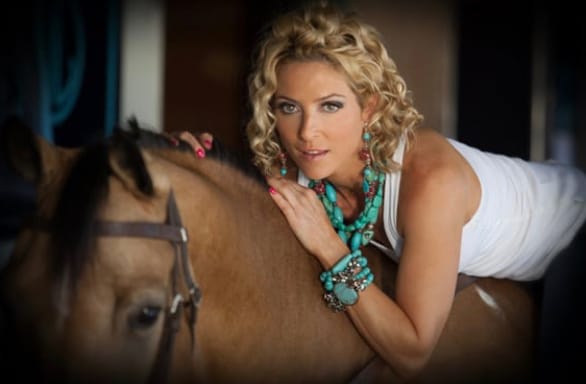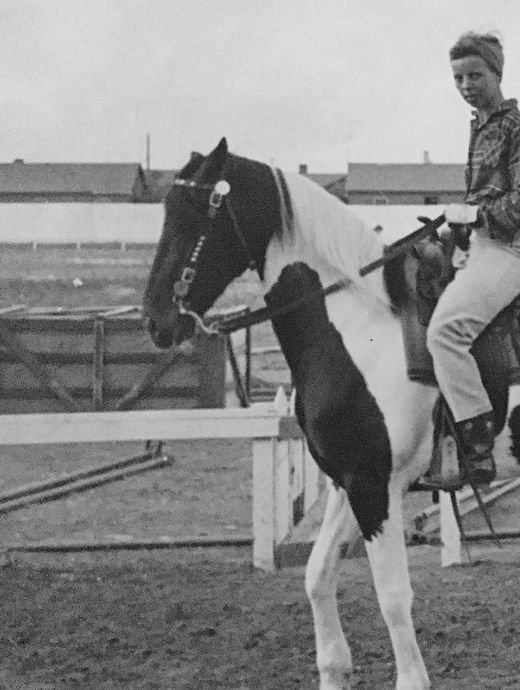
Female Jockeys
The term "woman" within the context of feminine jockeys underscores a historical gender issue prevalent in the recent past of the horse racing industry.
For an extended period, women faced exclusion from official horse racing. The Jockey Club of Great Britain, often considered the industry's patriarch, forbade women from obtaining licenses as trainers and jockeys under racing regulations.
The initial challenge against this prohibition came from horse trainer Florence Nagle, who emerged victorious in court. In 1966, both Florence Nagle and Nora Wilmot secured racehorse trainer licenses. On the day the court's decision was announced, one of Wilmot's horses triumphed at Brighton Racecourse, marking the first instance of a woman's name being recorded in the official list of winning horse trainers in Great Britain.
The inclination to confine women to the role of spectators in professional racing was evident on a global scale.
In Canada, female jockeys found avenues for participation in amateur racing on makeshift tracks organized by local communities. Alternatively, there were specific "women's" races, such as the Powder Puff Derby at Chinook Park Racetrack in Calgary.
The term "women's racing" under this name gained recognition during the inaugural transcontinental race for women pilots, the Powder Puff Derby, held in 1929. The race's name, ironically referring to "powder puff," reflects societal attitudes towards women's involvement in the sport.
Access to the hippodrome required women to don men's clothing. Additionally, to train horses, a man had to acquire a license and was acknowledged as the official trainer of the winning horse in the race, despite the actual trainer being a woman.

Eva Ring
This rider was a pioneer among female jockeys in Canada. She was born on June 24, 1911, in Edmonton, Alberta, and lived there until her passing in 1989. In the 1930s, Eva Ring was one of the most famous racers in the country. Despite having no opportunity to compete in official races against men, her passionate love for horses and sports led her to amateur grounds, exhibitions, and wherever horse racing took place. South Side Athletic Park in Edmonton was a venue where competitions were frequently held, and Eva Ring never missed them. Her contributions to the sports column of the Edmonton Journal newspaper made her popular, and racing enthusiasts recognized her as a horse connoisseur and an excellent jockey.
Eva Ring had numerous winning tournaments in the 1930s and 1940s. In 1941, as an out-of-town jockey in the Powder Puff Derby and Beaux and Belles races in Calgary, she gained widespread attention with her performances, with bettors placing bets on Eva and her horse only after learning of her participation in the race.
Starting in the mid-1940s, Eva shifted away from sports and began training horses. She worked for Bill Little, a thoroughbred horse breeder in Saskatchewan. The owner of the horses considered his collaboration with Eva Ring a great success, as the results of her coaching work were beyond praise.
"That was in the days of Eva Ring," is what they say now about horse racing in Canada in the 1930s and 1940s. Isn't this recognition of this amazing woman's services to sports?
Francine Villeneuve (22/07/1964)
Francine received her jockey's licence in 1987 and was second in the Queen's Plate on Wilderness Song in June 1991. That same year, she became Canada's first female jockey to ride all three legs of Canada's most prestigious race, the Triple Crown.
From that time on, Francine Villeneuve began to achieve victorious finishes; her career was interrupted only twice: for the birth and care of her son, and for a sabbatical dedicated to her family.
"Queen of Fort Erie," she had 8,140 starts, 1,001 wins, more than 3,000 podium places and more than $15 million in income over a 25-year career in the sport - with such indicators that the famous Canadian retired in 2012.
But she did not leave the sport. Villeneuve owns a horse farm in Florida; after receiving her trainer's licence, she took up coaching and divides her time between racing in Florida and Canada. At one time, she trained Akhal-Teke horses and was invited to races of the International Akhal-Teke Association. Later, she co-founded the Queens Racing Club, where she provides the opportunity for thoroughbred horse lovers to get involved in the sport.
Laurie Gulas (16/02/1969)
Laurie Gulas' jockey career commenced at Woodbine Racetrack.
The pinnacle of her racing career was winning the Breeders' Stakes in 1999, making her the first woman to secure the Canadian Triple Crown. In the same year, she claimed victory in the Wonder Where Stakes and emerged as the winner of the Canadian Triple Tiara. It was undeniably a triumphant year for Laurie Gulas.
In 1994, she triumphed in a Level 3 race, followed by a Level 2 race in 2002, and subsequently many others.
Laurie's career spanned from the late '90s to the mid-2000s, accumulating 3,845 wins and over $8 million in prize money by the time of her retirement in 2007.
Unfortunately, Laurie Gulas faced health problems and drug addiction, which she successfully overcame. The frequent injuries sustained during years of racing took a toll on her health, leading to her retirement from the sport in 2007.
Chantal Sutherland (23/02/1967)
The Canadian Vogue cover model and TV presenter, a graduate of York University with a degree in psychology and communications, asserts that her true calling is to be a jockey, a conviction supported by her impressive biography.
Chantal's career commenced at Woodbine Racecourse but has taken her around the world, competing in the US, Europe, and becoming the first woman to participate in the world's richest race in Dubai in 2012.
Victories at various levels throughout her career earned her more than £40 million.
Chantal's model appearance enabled her to become the face of the Californian Del Mar racetrack, helping attract audiences and young enthusiasts, significantly elevating her status.
One of her most notable races occurred at this racecourse in 2011, where she competed against and lost to her ex-fiancé.
Presently, the rider boasts more than 1200 victories. However, her sports biography is ongoing, and the tally of victories continues to grow.
Emma-Jane Wilson (01/09/1981)
The catalogue of major races where Emma-Jane Wilson emerged victorious would span more than one page. By incorporating minor races, it would form a small book—a compendium of her triumphs.
In 2007, she clinched victory in the Queen's Plate, becoming the first woman in Canada to secure triumph in the nation's most esteemed race.
In 2012, she became the second woman, following Villeneuve, to surpass the 1,000-win milestone. Villeneuve held this achievement for a decade, but Emma-Jayne Wilson has surpassed her, boasting over 1,700 winning finishes. Additionally, she has accumulated more than $83 million in prize money, establishing herself as the leading female jockey in Canada in terms of earnings.
Wilson is currently at the zenith of her career and continues to excel.
Teneka Wolfe-Bell (1987)
Teneka Wolfe-Bell's initial 12 races were conducted at Hastings Race Course in British Columbia.
Canada's inaugural black female rider boasts numerous "first" and "only" titles.
In 2016, she triumphed in her first race at the Fort Erie track, marking the first instance of a black woman winning a race in Ontario.
She remains the sole black female jockey in the province.
Teneka Wolfe-Bell stands as the first and only black woman to secure victory at Woodbine Race Course on October 15, 2020.
Despite her victories and "first" titles, at heart, she remains an enthusiastic individual who adores horses and speed, continuing to compete and succeed.
Gender inequality in horse racing, a peculiar relic of the past, is gradually becoming obsolete. Everyone benefits from this transformation—jockeys and spectators, owners and competition organizers, coaches and bookmakers. This indisputable fact is evidenced by the accomplishments of courageous pioneering women who have not diminished in their beauty despite breaking down barriers.
8 March 2024, 07:15
Articles
Why will the Snaitech deal double Flutter's market share in Italy?
26 September 2024, 16:00
Hiring Talent from Different Industries: Why and How?
26 September 2024, 09:09
The Social Casino Phenomenon: Real Money and Databases for Bookmakers
20 September 2024, 17:18
Dividing the Peruvian Pie: Who Will Take Over the Market After the Regulatory Law?
20 September 2024, 14:10
Expert Opinion: Why Betting Can't Survive Without AI Analysis of Sports Data
13 September 2024, 11:00
Finnish Gambling Market Reform: Veikkaus Resurgent vs Kindred's Leadership
10 September 2024, 19:00
Other news
Gambling adverts during football matches triple in UK
29 September 2024, 16:17
Merkur Group founder to step down as chairman after 67 years at the helm
29 September 2024, 09:22
Dutch players demand bookmakers refund their money
28 September 2024, 15:14
Flutter Enters Top 3 Largest Bookmakers in Brazil
28 September 2024, 10:08
DraftKings to Pay $200,000 Fine Over Social Media Post
27 September 2024, 15:41
Star Entertainment Group Reports Financial Downturn
27 September 2024, 10:54
Norfolk casino project approved by Architectural Review Board
26 September 2024, 14:37
Flutter Entertainment aims to triple profits
26 September 2024, 09:19
Five social casino ads banned in UK
25 September 2024, 10:27
Brazil's WA.Technology Acquires Onseo
24 September 2024, 17:24
ESPN Bet Could Launch in New York by Weekend
24 September 2024, 08:30
EveryMatrix Appoints Former Entain Employee as Product Director
23 September 2024, 17:03
Articles
Why will the Snaitech deal double Flutter's market share in Italy?
26 September 2024, 16:00
Hiring Talent from Different Industries: Why and How?
26 September 2024, 09:09
The Social Casino Phenomenon: Real Money and Databases for Bookmakers
20 September 2024, 17:18
Dividing the Peruvian Pie: Who Will Take Over the Market After the Regulatory Law?
20 September 2024, 14:10
Expert Opinion: Why Betting Can't Survive Without AI Analysis of Sports Data
13 September 2024, 11:00
